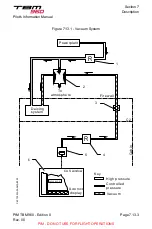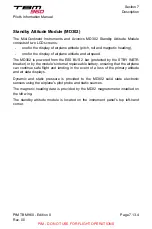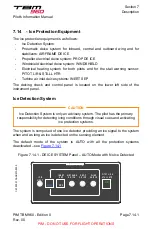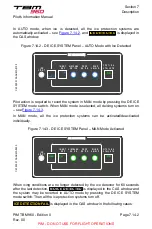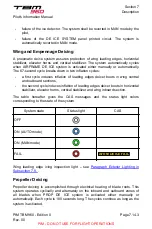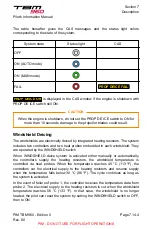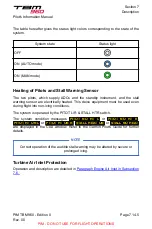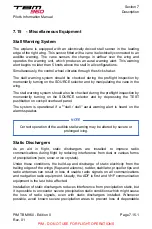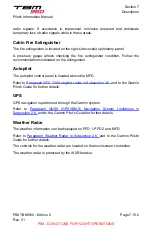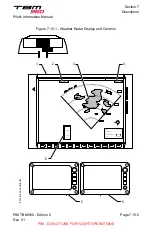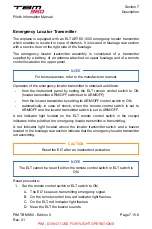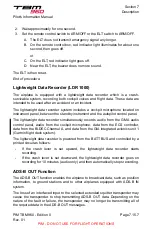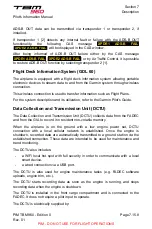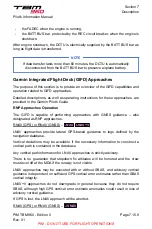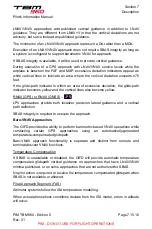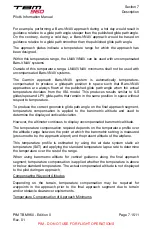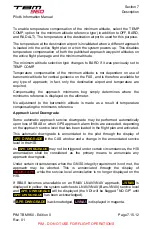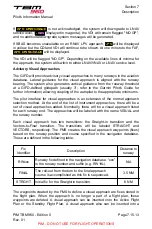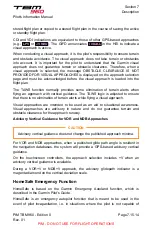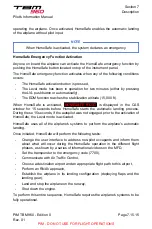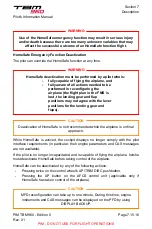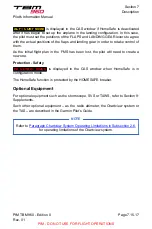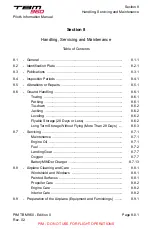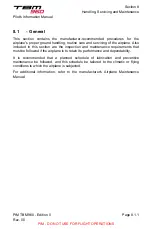
2. Wait approximately for one second.
3. Set the remote control switch to ARM/OFF or the ELT switch to ARM/OFF.
A. The ELT does not transmit emergency signal any longer.
B. On the remote control box, red indicator light illuminates for about one
second, then goes off.
or
C. On the ELT, red indicator light goes off.
D. Near the ELT, the buzzer does no more sound.
The ELT is then reset.
End of procedure.
Lightweight Data Recorder (LDR 1000)
The airplane is equipped with a lightweight data recorder which is a crash-
survivable system, recording both cockpit voices and flight data. These data are
intended to be used after an accident or an incident.
The lightweight data recorder system includes a cockpit microphone located on
instrument panel, between the standby instrument and the autopilot control panel.
The lightweight data recorder simultaneously records audio from the GMA audio
control panel, audio from the cockpit microphone, data from the ECS controller,
data from the FADEC Channel A, and data from the GIA integrated avionics unit 1
(Garmin flight deck system).
The lightweight data recorder is powered from the BATT BUS and controlled by a
printed circuit as follows:
-
If the crash lever is set upward, the lightweight data recorder starts
recording.
-
If the crash lever is set downward, the lightweight data recorder goes on
recording for 10 minutes (audio only) and then automatically stops recording.
ADS-B OUT Function
The ADS-B OUT function enables the airplane to broadcast data, such as position
information, to ground stations and to other airplanes equipped with ADS-B IN
system.
The loss of an interfaced input to the selected extended squitter transponder may
cause the transponder to stop transmitting ADS-B OUT data. Depending on the
nature of the fault or failure, the transponder may no longer be transmitting all of
the required data in the ADS-B OUT messages.
Section 7
Description
Pilot's Information Manual
PIM TBM 960 - Edition 0
Rev. 01
Page 7.15.7
PIM - DO NOT USE FOR FLIGHT OPERATIONS

